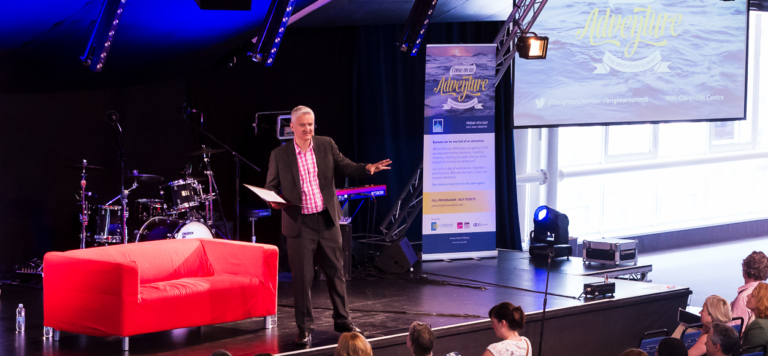19th July 2019
The non-linear approach – let your audience set the structure
This is a structure that is probably best tried once you’re a fairly confident presenter.
You break down your presentation content into bite-sized topic ‘nuggets’ and then let your audience decide the order in which they want to hear those nuggets of content.
Start with a strong opening that sets up your topic, outlines your themes and lists what the audience will be able to take from your presentation. Then reveal the topic nuggets the audience can choose from and invite them to make their first choice.
There are three ways to do this:
- Have a slide on the screen listing all the nuggets – if you’re confident with slides, you can animate the slide so a nugget disappears once you’ve covered it.
- I tend to use a deck of cue cards with a word or phrase on one side. I spread them out and offer them to a member of the audience and ask them to pick a card, a bit like a magician might ask you to pick a playing card. I ask the audience member to read out the word or phrase on the card and then I talk about that topic nugget. I can use the reverse of the card for a couple of bullet points to act as a reminder of what I want to say on that particular topic.
- In a similar vein you can put anything from slips of paper to ping pong balls in a hat, bag or box and ask people to pull one out, each triggering the next nugget.
This can be a very engaging and interactive way to present your topic, with the audience feeling they’re dictating the content (although of course it’s your usual content, just delivered in a slightly random order). The downside of this is that you can’t control the order, so each nugget has to be stand-alone and can’t depend on you having delivered a certain other nugget first in order to be understandable.
You also need to be keenly aware of your timings and how long you spend on each nugget; if you don’t have time to get through all of them, you can leave your audience feeling short-changed if they’ve missed out on certain parts of your content.
This is not a structure to use for your first-ever presentation, but it can be a good way to challenge yourself if you’re delivering the same content regularly. It’s
also a great way to keep it fresh for your audience, especially if you’re presenting to them regularly, such as at a weekly or monthly team meeting.

